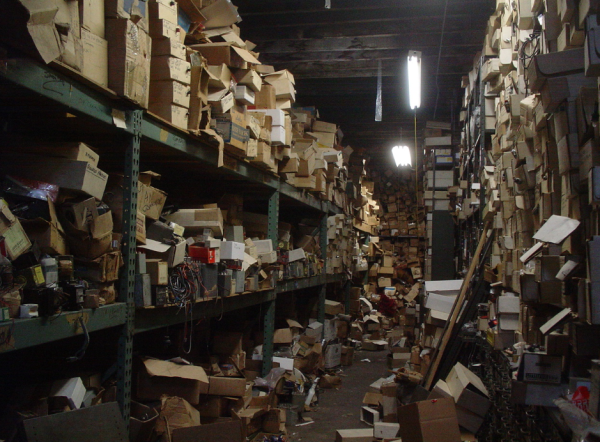
Warehouse Management Systems (WMS) are crucial to ensure efficiency since they control movement of materials, create storage efficiencies, and manage overall inventory procedures within the warehouse. A cubing system is a piece of advanced technology that captures accurate dimensions by scanning the item using ultrasonic, laser, camera, or infrared sensing equipment. A cubing system plays a vital role within your WMS to make sure your distribution center stays afloat and isn't draining the life out of your operation.
Below are six ways to not only save your WMS utilizing cubing equipment, but to protect it from ever sinking your DC.
1. Toss the Tape Measure
Taking a tape measure to all your SKU's was formerly popular, however, this proved to be frustrating and time-consuming. Using a cubing system as part of the warehouse management system saves the extra effort. Warehouse systems are computerized to be more accurate and fast. Cube and weight data obtained from a dimensioning system can be stored within a database to facilitate easy reference and verification. Once the cube and weight data have been accurately captured and saved, that data can quickly be imported directly in the WMS in batches or in real time. Simply supplementing your WMS procedures with a portable cubing station will make sure your Inventory Master File constantly maintains up to date dimensions and weight for all inbound and outbound freight.
2. CAPITALIZE YOUR STORAGE SPACE
Storage space usage is better optimized if individual product dimensions are taken into account, in relation to the warehouse. Usage of the outdated tape measure is bound to be painstaking and unreliable. Alternatively, you can use a cubing system in day-to-day operations to best make use of the available space.
Storage space usage is better optimized if individual product dimensions are taken into account, in relation to the warehouse. Usage of the outdated tape measure is bound to be painstaking and unreliable. Alternatively, you can use a cubing system in day-to-day operations to best make use of the available space.
3. PICKING FREQUENCY

Most WMS' have a feature that determines the frequency in which items from the
warehouse are picked. This is obtained from the data of the items on order. Pick frequency assists in the determination of where to arrange which item, so that during the time of picking, the most popular/common goods ordered by your customer are in a consolidated area to decrease time from one pick to the next. Obtaining accurate cube and weight data for all the individual pieces, or eachs, will help to assign the best possible storage locations for these odd-shaped pieces.
4. PALLET BUILDING BASICS
During packing, there often arises need to build pallets. Here, heavier materials need to be positioned at the bottom. A benefit of using this system as part of your warehouse is the ability to use the data, already obtained, of the products, to determine how to reach the objective of measurement of the products. These warehouse management system features cannot be acquired using basic measurement methods such as the tape measure.
5. LOAD PLANNING AND SLOTTING EFFICIENCIES
warehouse are picked. This is obtained from the data of the items on order. Pick frequency assists in the determination of where to arrange which item, so that during the time of picking, the most popular/common goods ordered by your customer are in a consolidated area to decrease time from one pick to the next. Obtaining accurate cube and weight data for all the individual pieces, or eachs, will help to assign the best possible storage locations for these odd-shaped pieces.
4. PALLET BUILDING BASICS
During packing, there often arises need to build pallets. Here, heavier materials need to be positioned at the bottom. A benefit of using this system as part of your warehouse is the ability to use the data, already obtained, of the products, to determine how to reach the objective of measurement of the products. These warehouse management system features cannot be acquired using basic measurement methods such as the tape measure.
5. LOAD PLANNING AND SLOTTING EFFICIENCIES

The data obtained can be used for slotting, load planning, or minimizing your shipping costs. If a warehouse facility is to be competitive and efficient, there has to be a way to organize the data on the shapes, sizes, and arrangement of products. It is only possible through the use of an accurate and efficient system. A cubing system comes in very handy when load planning becomes a necessity.
6. SHIPPING PROCESSES
Finally, during the shipping process, data on the measurements of commodities can be designed to fit customers' specifications. This is just one more reason to toss the tape measure–get a cubing system as part of your total Warehouse Management System.
For a FREE warehouse cubing consultation click here!

